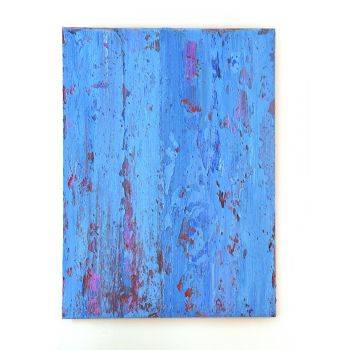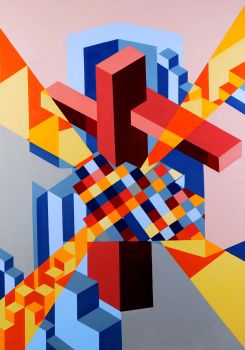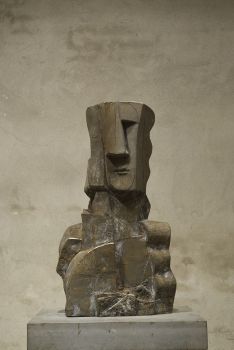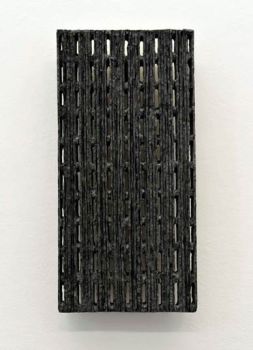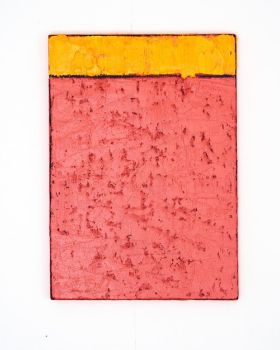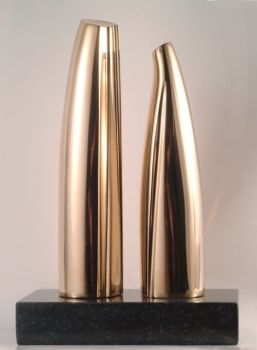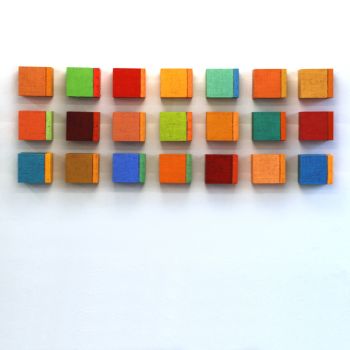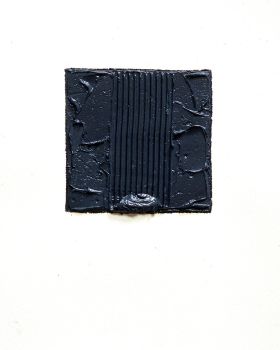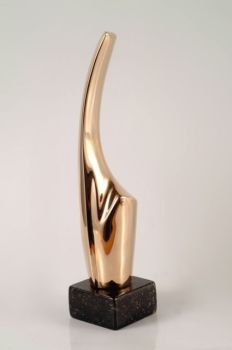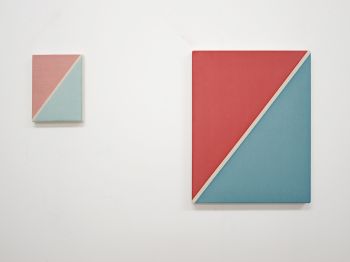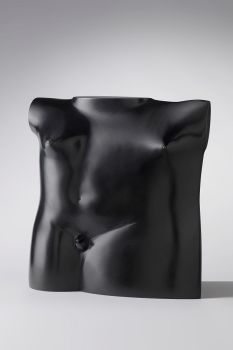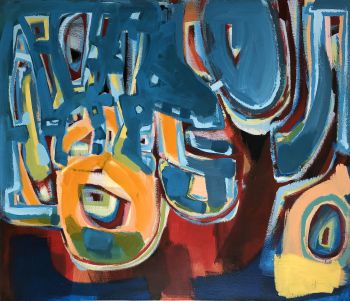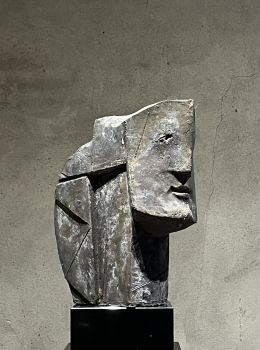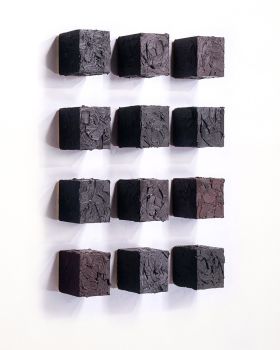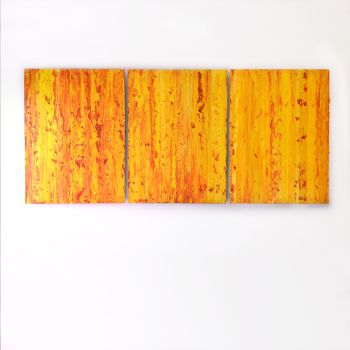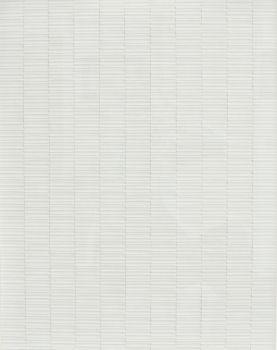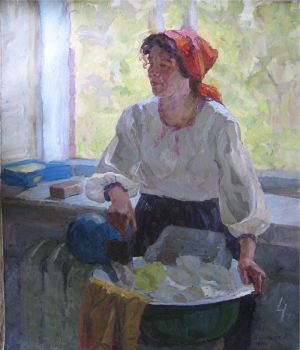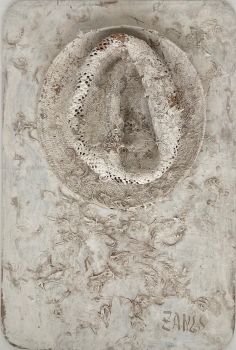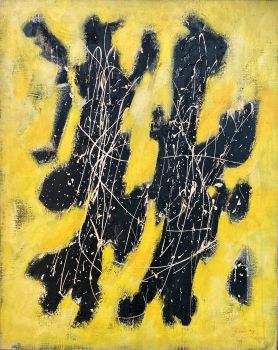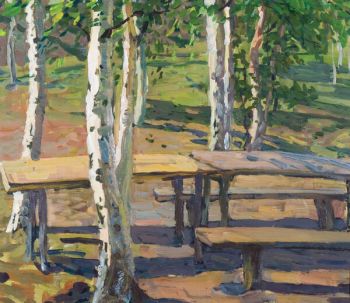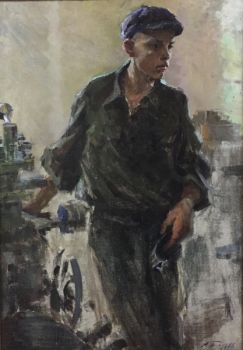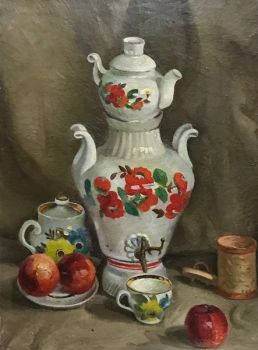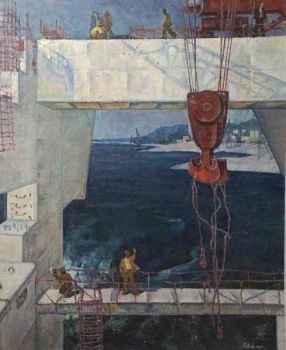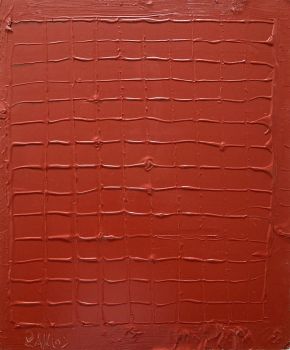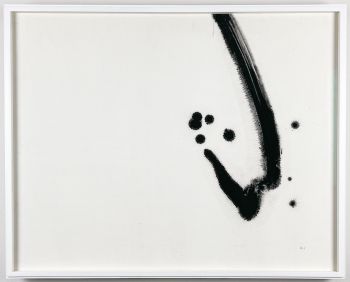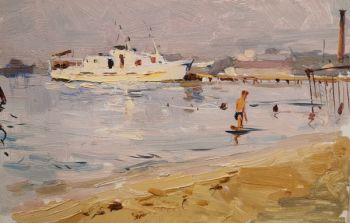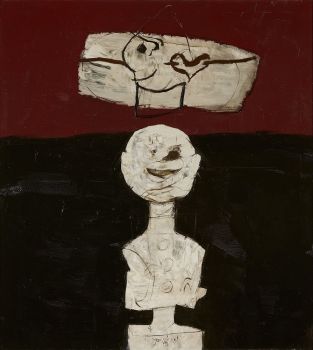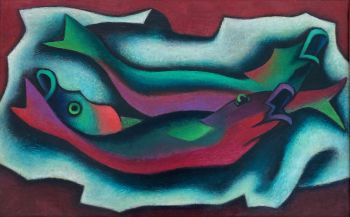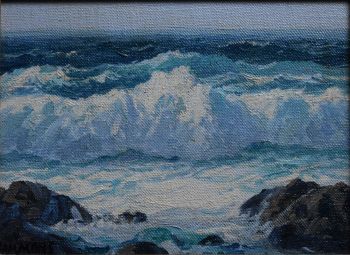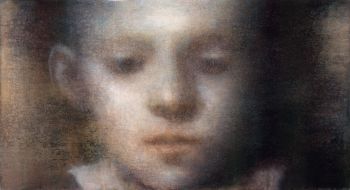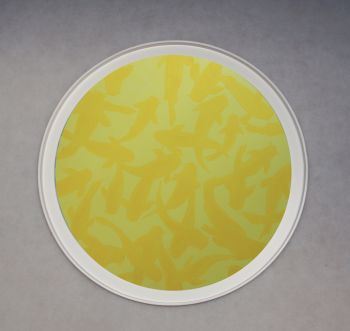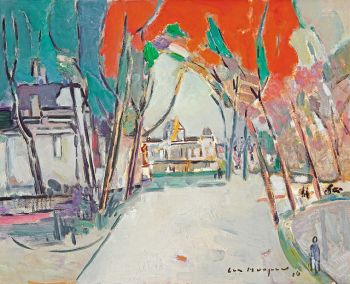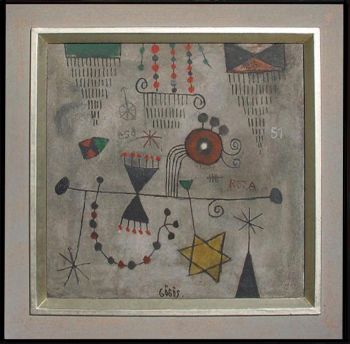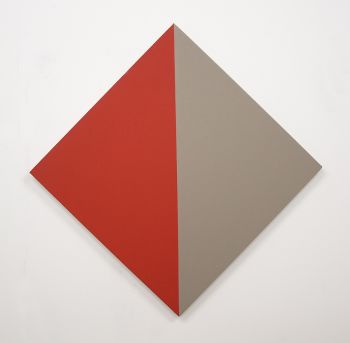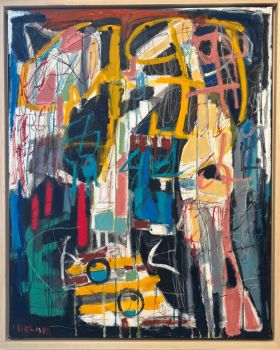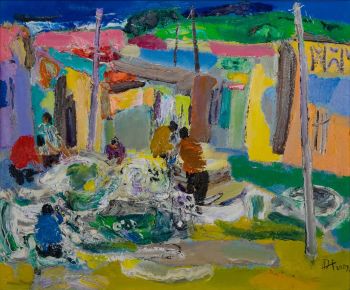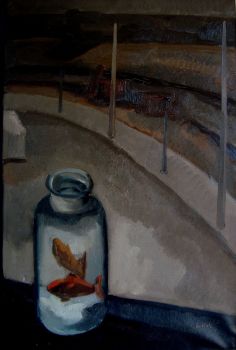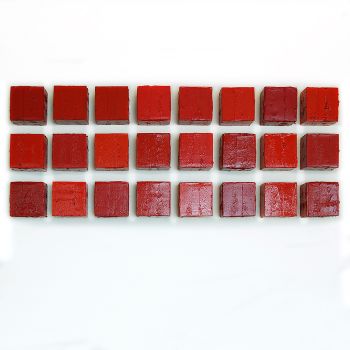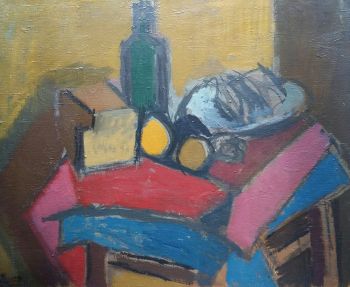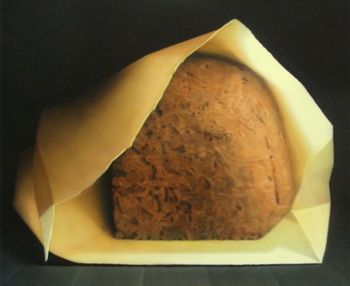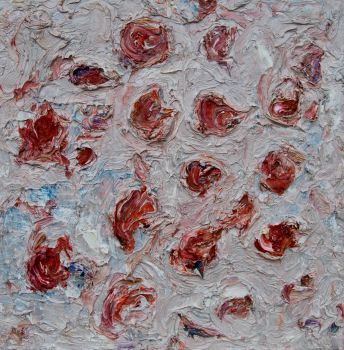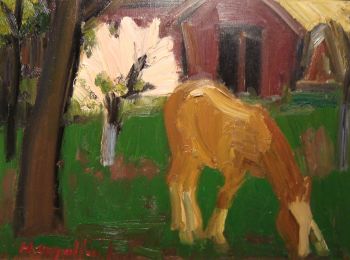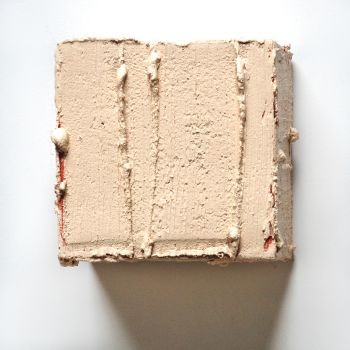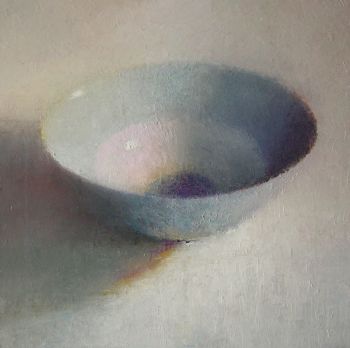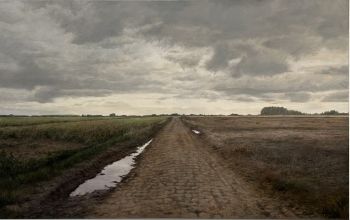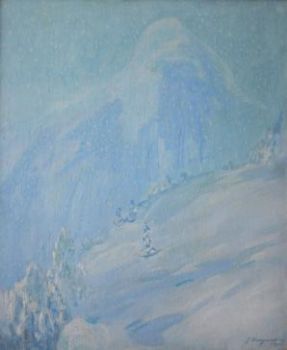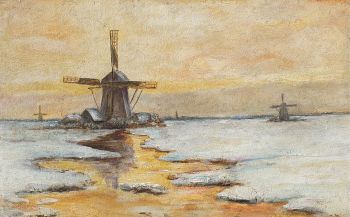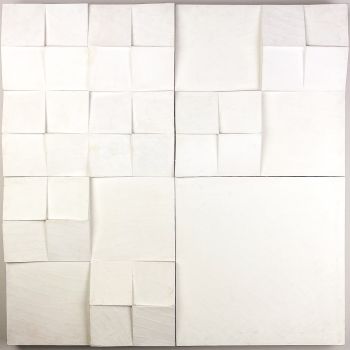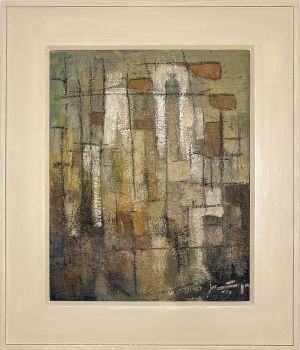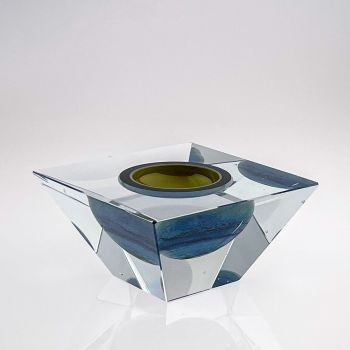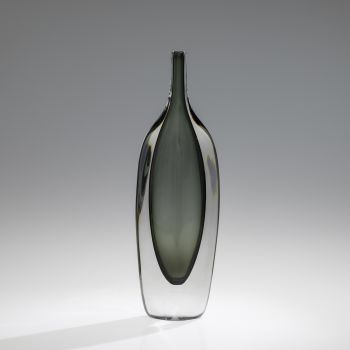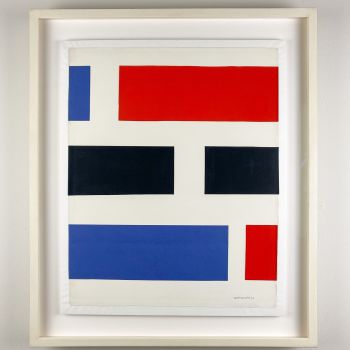Pieter de Haard – “Compositie XIV” (Variation Pentagram) 1978/1988 – oil and yarn on board 1978 - 1988
Pieter de Haard
CanvasOil paintPaint
71 ⨯ 70 ⨯ 2 cm
ConditionVery good
€ 4.500
Van Kerkhoff Art
- About the artworkA unique oil and yarn painting on board. Painted in 1978 and revised in 1988.
Signature and title on the reverse.
About Pieter de Haard
Pieter de Haard (Rotterdam 1914 – Rotterdam 2000) was a Dutch painter and illustrator, most known for his geometric abstract oeuvre he created from the 1940’s onward.
As a young boy, Pieter grew an interest in art and started visiting exhibitions in the Boijmans van Beuningen Museum in his hometown, Rotterdam. The museum director Dirk Hannema noticed the young visitor and advised the boy to go to the Kunstnijverheids School, the predecessor of the Art Academy.
In 1931/1932 PdH went to Münich where he studied Philosophy and Mathematics. When he returned to Rotterdam, he continued to paint. In the pastels De Haard painted during World War II he continued researching into the representation of spatial dynamics until he finally settled for mathematics, its natural ratios and the Golden Section in particular.
The oeuvre from his mathematical period which started in 1946 when after he returned to Rotterdam constituted the height of his career, was gradually stripped bare of colour and the compositions became ever more straightforward.
From the later ’40s to mid-’50s, Pieter de Haard was (partly) living in Paris, where he created an oeuvre partially based on musical rhythms. While in Paris Pieter de Haard worked for an American impresario of theatre shows for whom he painted decors. That American liked his work and introduced De Haard to gallerists, art dealers and American collectors.
Pieter de Haard returned to Rotterdam in the 1950’s and got married. Times were difficult for him in the next two decades and he got a job as an art-teacher by the Social Department of the city of Rotterdam.
Since the 1970s, interest in Pieter de Haard’s work has been growing, as evidenced by the exhibitions organised of his work since then.
Signed
Verso signed and dated; Pieter de Haard, 1978 / 1988
Condition
Good original condition, original aluminium frame
Provenance
Inheritance family De Haard
Dimensions
Artwork
Height 71 cm
Width 70 cm
Frame
Height 71,5 cm
Width 70,8 cm
Depth 2,5 cm - About the artist
During his high school years he often spent his free hours in Museum Boymans. In his last school year he combined this with evening classes at the Rotterdam Academy of Visual Arts. He received his technical training in painting in Munich, after which he made a living as a restorer for a while. Initially he worked figuratively; From the late 1930s he started experimenting with abstraction.
During the war years he read Spinoza, Kant and Goethe. Spinoza and Kant were important for the development of his ideas about space and infinity, while Goethe particularly fascinated him with his theory of color.
De Haard also delved into the ideas and work of the artists of De Stijl, where Van Doesburg's dynamics particularly appealed to him. He felt a strong relationship between visual art and music and saw this relationship exclusively in terms of actual colors versus tonal and timbres. In his painting he varied the brightness and saturation of colors.
Already during the Second World War he created his first geometric abstract works: geometric figures, based on age-old measurement systems, with the golden ratio as his favorite. A line is divided in such a way that the shortest part is equal to twice the longest part. The resulting relationships always look harmonious.
De Haard's work has a cosmic character and stands out because of its exciting color combinations.
Are you interested in buying this artwork?
Artwork details
Related artworks
- 1 - 4 / 24
- 1 - 4 / 24
- 1 - 4 / 24
- 1 - 4 / 12







